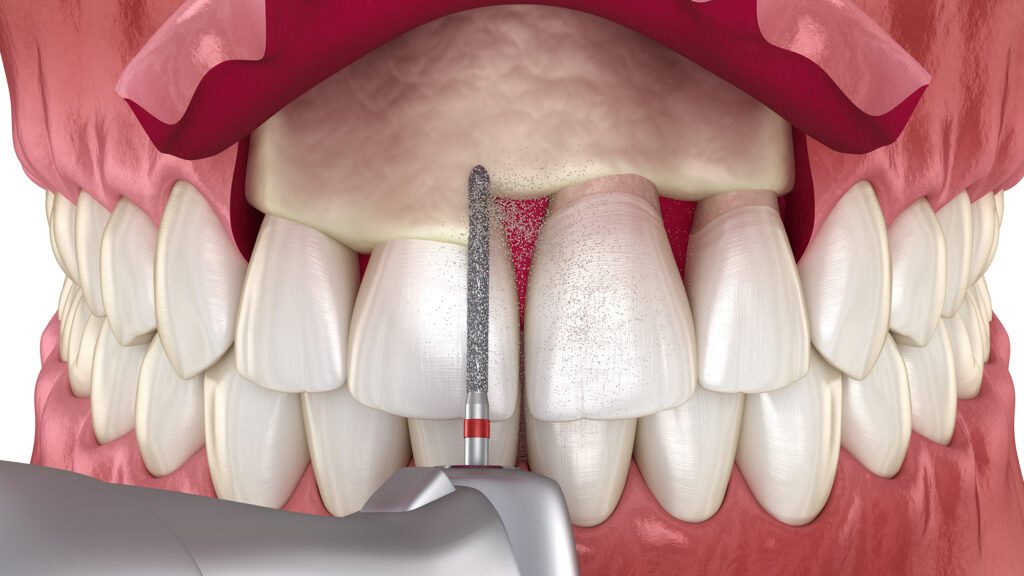
Crown lengthening
Crown lengthening is a dental surgical procedure performed to expose more of a tooth’s structure by reshaping the gum and bone tissue. This procedure is often done for functional or cosmetic reasons.
Functional Reasons: Crown lengthening may be performed when a tooth is decayed, fractured below the gumline, or has insufficient tooth structure above the gumline to support a restoration (such as a crown).
Cosmetic Reasons: It can be done for cosmetic purposes to improve the appearance of “gummy” smiles, where the teeth appear short due to excess gum tissue
Before the procedure, the dentist or periodontist will conduct a thorough examination, including X-rays, to assess the tooth and surrounding structures.
Local anesthesia is administered to numb the affected area, ensuring the patient’s comfort during the procedure.
The dentist or periodontist makes incisions in the gum tissue to create flaps, exposing the tooth and surrounding bone. In some cases, a small amount of bone may also be removed.
Once the gum tissue is repositioned, more of the tooth’s surface becomes visible. This allows the dentist to access and treat the underlying tooth structure or place a restoration.
The gum tissue is repositioned and sutured back in place. Sutures help secure the tissue during the initial stages of healing.
Patients are provided with post-operative care instructions, including guidelines for oral hygiene, pain management, and the use of any prescribed medications.
Follow-up appointments are scheduled to monitor the healing progress and assess the effectiveness of the treatment.
Benefits of Crown Lengthening:
Restorative Dentistry: Crown lengthening provides adequate tooth structure for the placement of restorations, such as crowns or bridges.
Improved Esthetics: In cosmetic cases, crown lengthening can enhance the appearance of the smile by achieving a more balanced and proportionate tooth-to-gum ratio.
Healthier Periodontal Tissues: Crown lengthening can help create a healthier environment for the teeth and gums, reducing the risk of periodontal issues.
Crown lengthening is a common and effective procedure, but it involves surgical techniques and should only be performed by a qualified dentist or periodontist. Patients considering crown lengthening for cosmetic reasons should discuss their expectations and desired outcomes with their dental professional. It’s crucial to follow post-operative care instructions and attend follow-up appointments for optimal healing and results.
